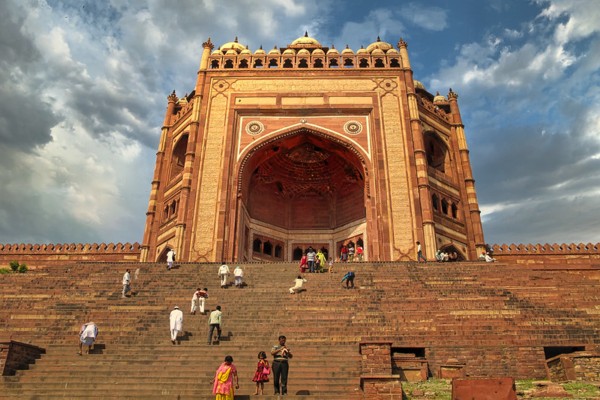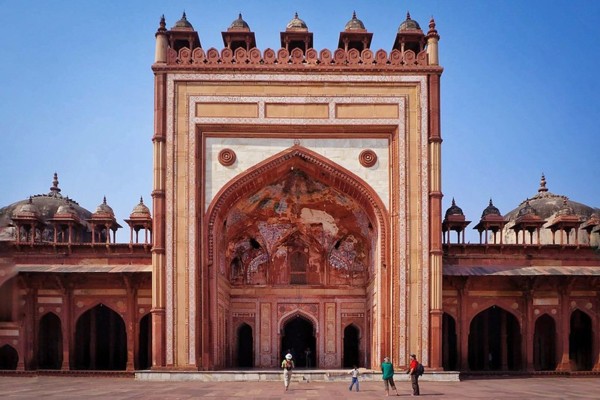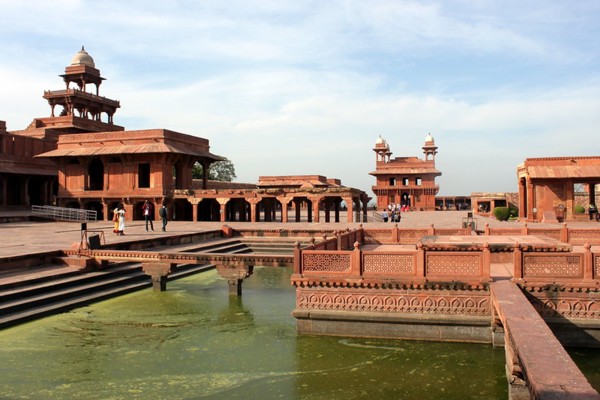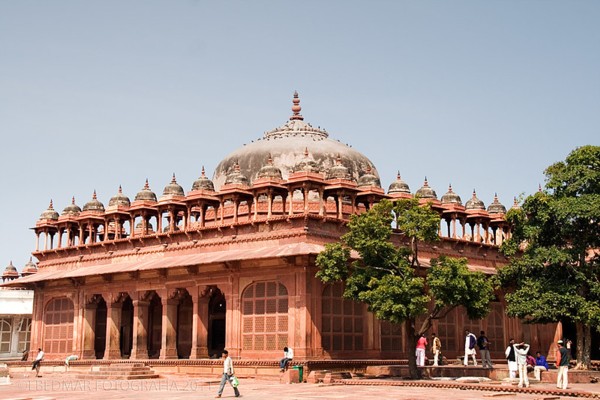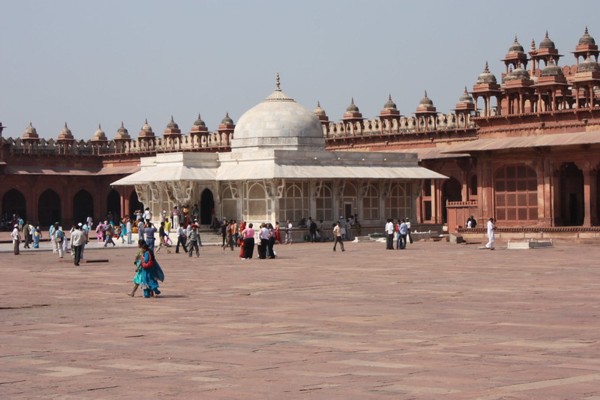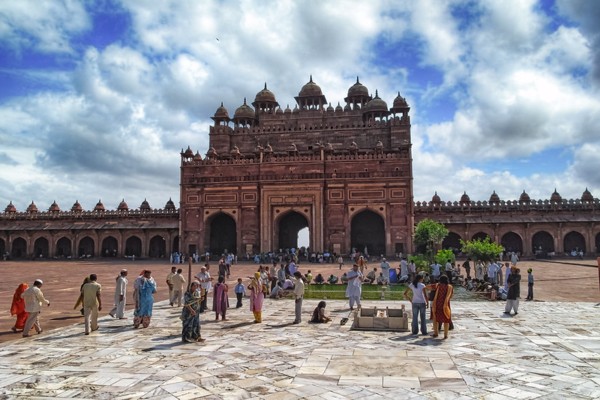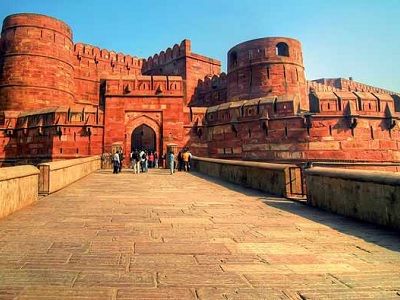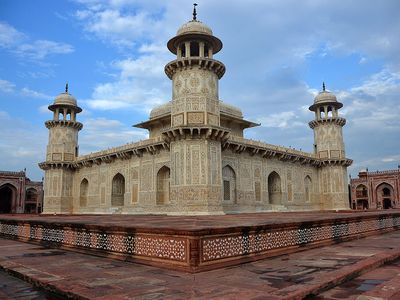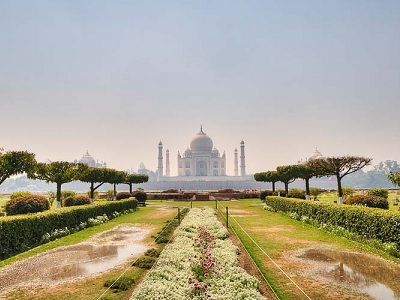
Fatehpur Sikri Travel Guide, Information, Tips and Best Information
Fatehpur Sikri A city, predominantly made of red sandstone, Fatehpur Sikri was founded in 16th century by Mughal Emperor Akbar. It is essentially a fortified city built by the king and had been the capital of his Empire for fifteen years. Now a UNESCO world heritage site and a famous tourist attraction, it is a fine example of Mughal architecture. Fatehpur Sikri is home to Jodha Bai's palace, Jama Mosque, Buland Darwaza, and a Tomb of Salim Chisti among many other famous monuments, each of which, is an integral part of the Indian heritage.
A unique blend of architectural excellence, as well as religious beliefs - sums up Fatehpur Sikri. This monument was built by Akbar to honour Sheikh Salim Chisti, whose prediction of the birth of a Mughal heir came true while Akbar was visiting the then city of Sikri. In honour of the prophecy, Akbar built this city and Jama Masjid, a stunning mosque which is still in use today. He also undertook the construction of three palaces for each of his favourite wives, one a Hindu, one a Muslim and one a Christian. An Indo-Islamic Masterpiece, Fatehpur Sikri is enclosed by an 11 km long fortification wall which has various gateways. A paradise for History buffs, this place is a must visit! You can go on a one day trip from Agra to Fatehpur Sikri.
The majestic walls of this small city echoes of the Medieval Mughal Reign. Fatehpur Sikri was the short-lived capital of the Mughal empire between 1571 and 1585 while Akbar was the Emperor. Akbar once visited the village of Sikri to consult the Sufi Saint Shaikh Salim Chisti who predicted about the birth of an heir to the Mughal throne. When the prophecy was proved to be true, Akbar built his new Capital in Sikri. He named it as Fatehabad at first, in which Fateh, a word of Arabic origin in Persian means Victorious. People say that Akbar was so much involved in its construction that he even dictated its architectural style. He planned the complex to be in the Persian Style to revive the Persian courtly ceremony made famous by his ancestor Timur. Moreover, the easy availability of sandstone marked the building of complex with the red stone. The city used to suffer from water shortages and was abandoned shortly after the death of Emperor Akbar.
Major Attractions in Fatehpur Sikri
Diwan-I-Aam (Hall of Public Audience): It is an enclosed space surrounded by colonnades and has a large open area where petitioners and courtiers once stood in attendance. On the western face of this building is the pavilion where the emperor sat in honour surrounded by his courtiers.
Diwan-I-Khas (Hall of private Audience): The Diwan-I-Khas (Hall of Private Audience)-used for serious, confidential, diplomatic, and religious discourses-is just behind. The Diwan-I-Khas is famous for its central decorated pillar consisting of 36 elegantly carved brackets in the Gujarati style-heavy and ornate, and sprouting in shape.
Panch Mahal: The most intriguing building in Fatehpur Sikri is the Panch Mahal (five-tiered palace), which is a five-storied pavilion of winds. The first two floors are of equal size, while the next two are graded. On top is a single kiosk or open pavilion. Each of the floors is supported on pillars. Originally, jali screens stood between the pillars. The pavilion was originally used by the women of the royal household and ladies of the harem. From the top of the Panch Mahal, one can have a panoramic view of this imperial city with its buildings, palaces, and the courtyards linking them. The Turkish Sultan's palace is known for exquisitely carved panels depicting wildlife-lions, birds, and foliage. Near the Diwan-I-Aam, one can see a tank called the Anup Talao. Four bridges link the central platform at the Anup Talao. Here the famous court musician Tansen played music. Akbar's private apartments stand close to the tank.
Jodha Bai's Palace : Jodha Bai (Jodha Bai was Akbar's Rajput queen) has the most distinctively Gujarati and Rajasthani architectural features. A strong portal guards this place, which was the residence of Akbar's prominent queens. Also noteworthy are Mariam's Palace or Sunehra Makan (golden house), Palace of Birbal (one of Akbar's minister notable for his witticisms) and a miniature garden.
Jami Masjid (Mosque) : Jami Masjid (mosque), sacred center of Sikri, symbolizes the city's spiritual prominence. It stands at the southwestern end of Fatehpur Sikri. A high wall with gateways on three sides opens into a huge courtyard, 111 by 139 meters, making it the largest to be found in the Mughal period. The inner walls are lined with columns and cloisters and the western façade has a massive arched doorways behind which are three domes. In the vast courtyard stands the tomb of Sheikh Salim Chisti whose blessings are still sought by childless women. This tomb was originally built in red sandstone but was later on made with marble. The tombstone covered by cloth is under a canopy of ebony, mother of pearl and brass. A corridor for circumambulation surrounds the square tomb chamber. Fatehpur Sikri had a short life of splendor. Once Akbar left it in 1585, it never regained its lost importance and has remained the most magnificent and well-preserved ghost city of India.
Package Enquiry
Please fill out this form and submit your enquiry. One of our travel experts will get in touch with you to provide you with more details of the trip, price offers etc, based on the information provided by you.
PLACES TO VISIT IN AGRA
Explore the India’s top WONDER (Taj Mahal, Agra). Book Day Tour, Overnight Tour, Sunrise Tour, Sunset Tour.
Photo
Gallery









